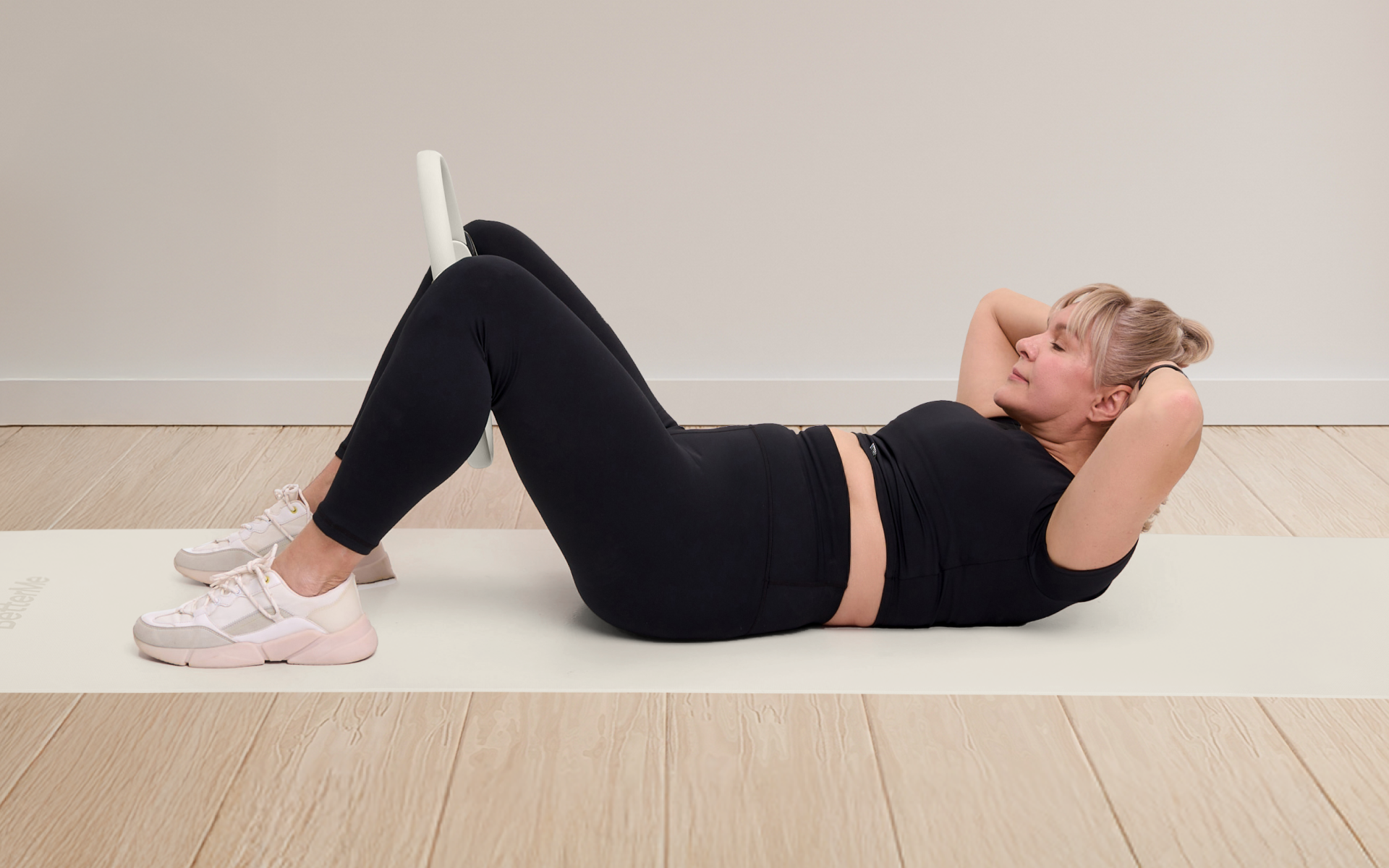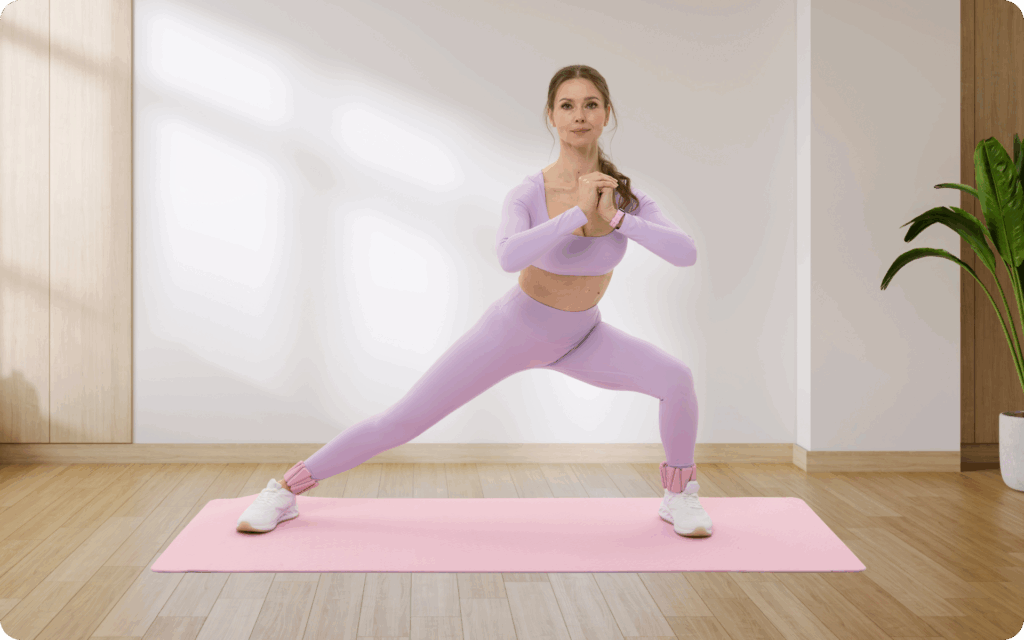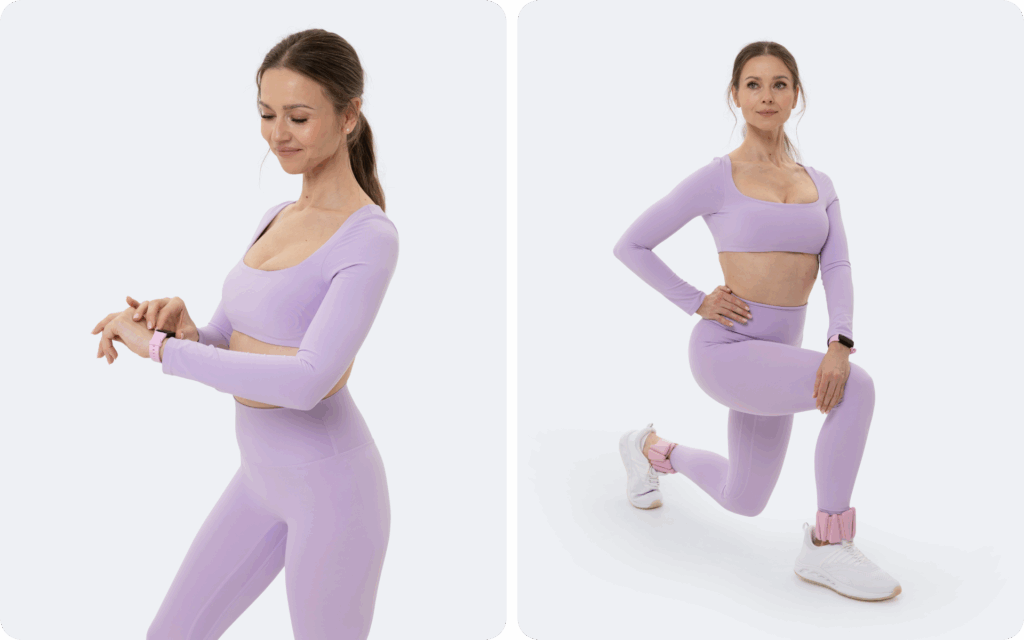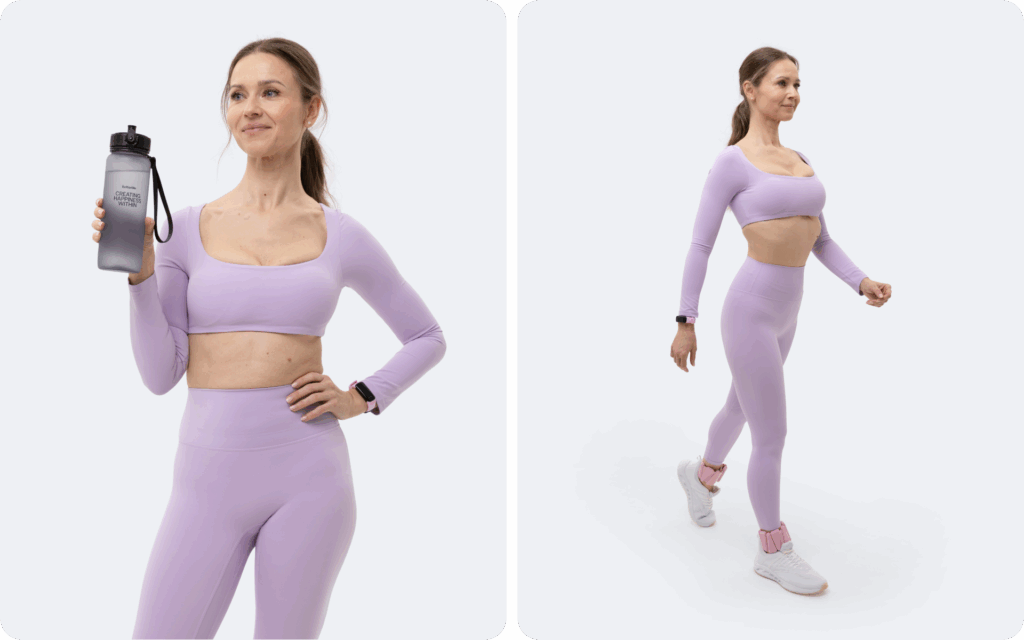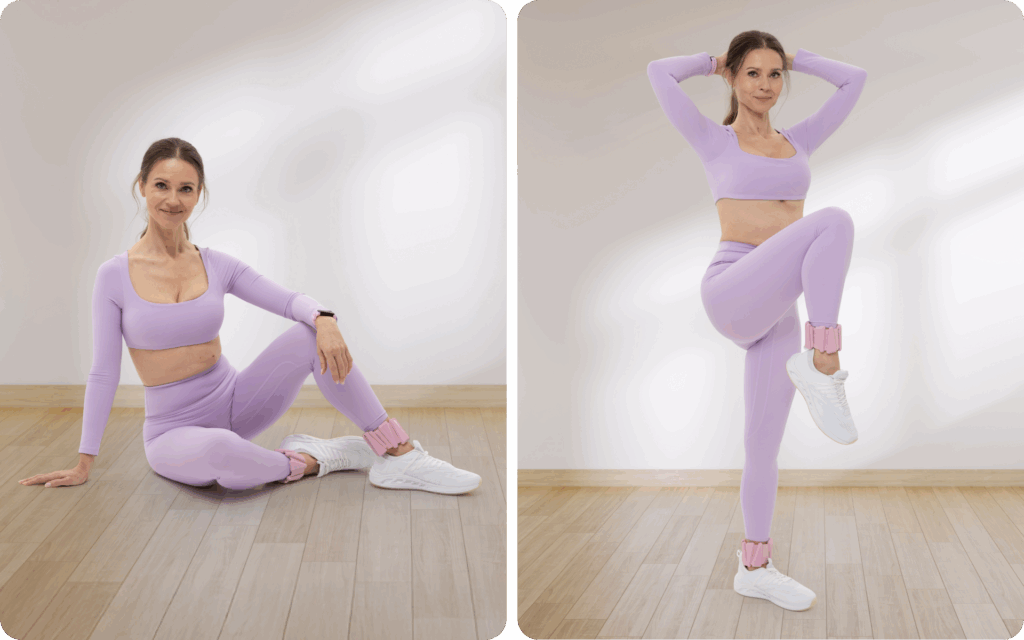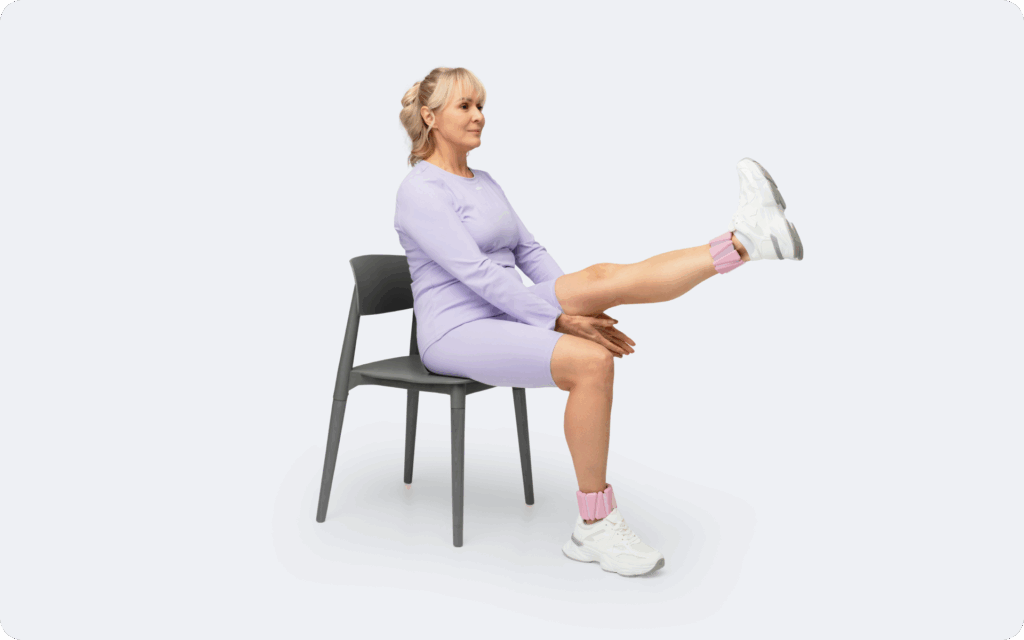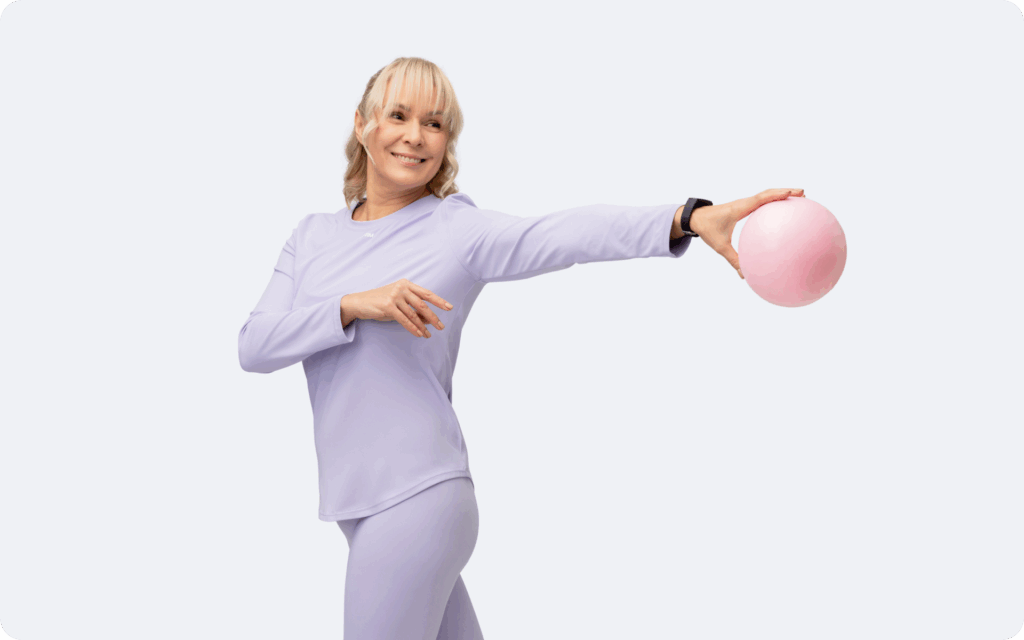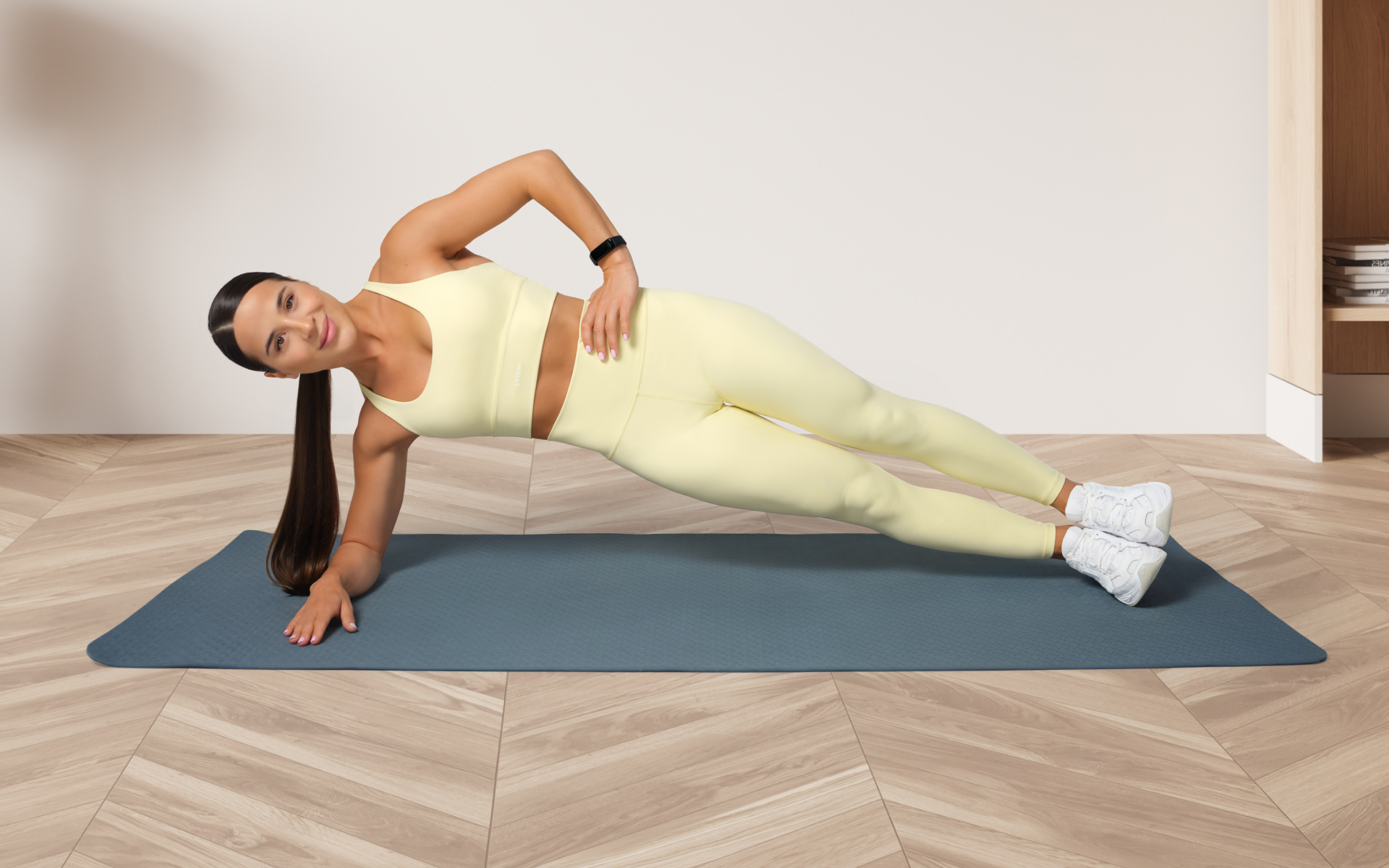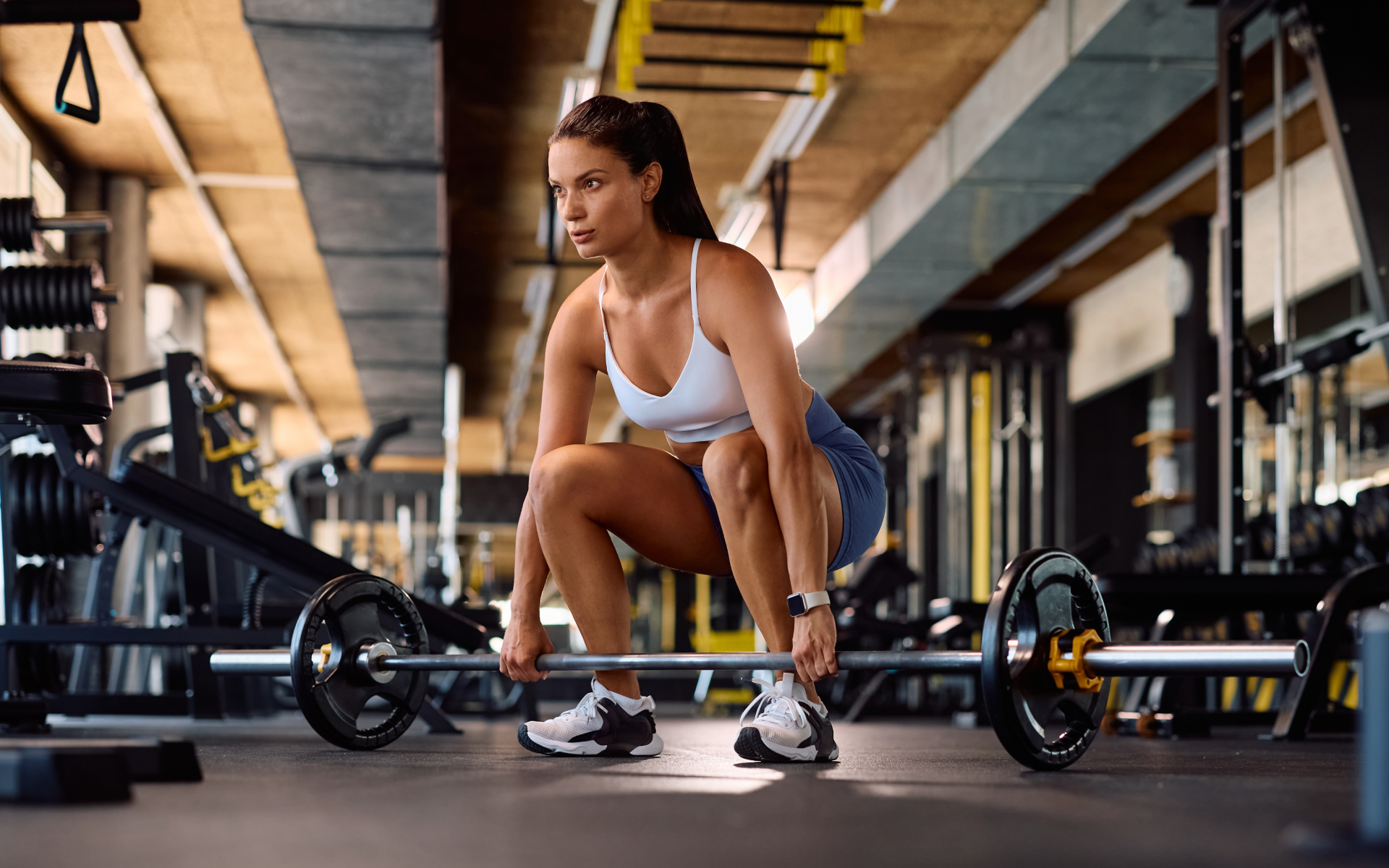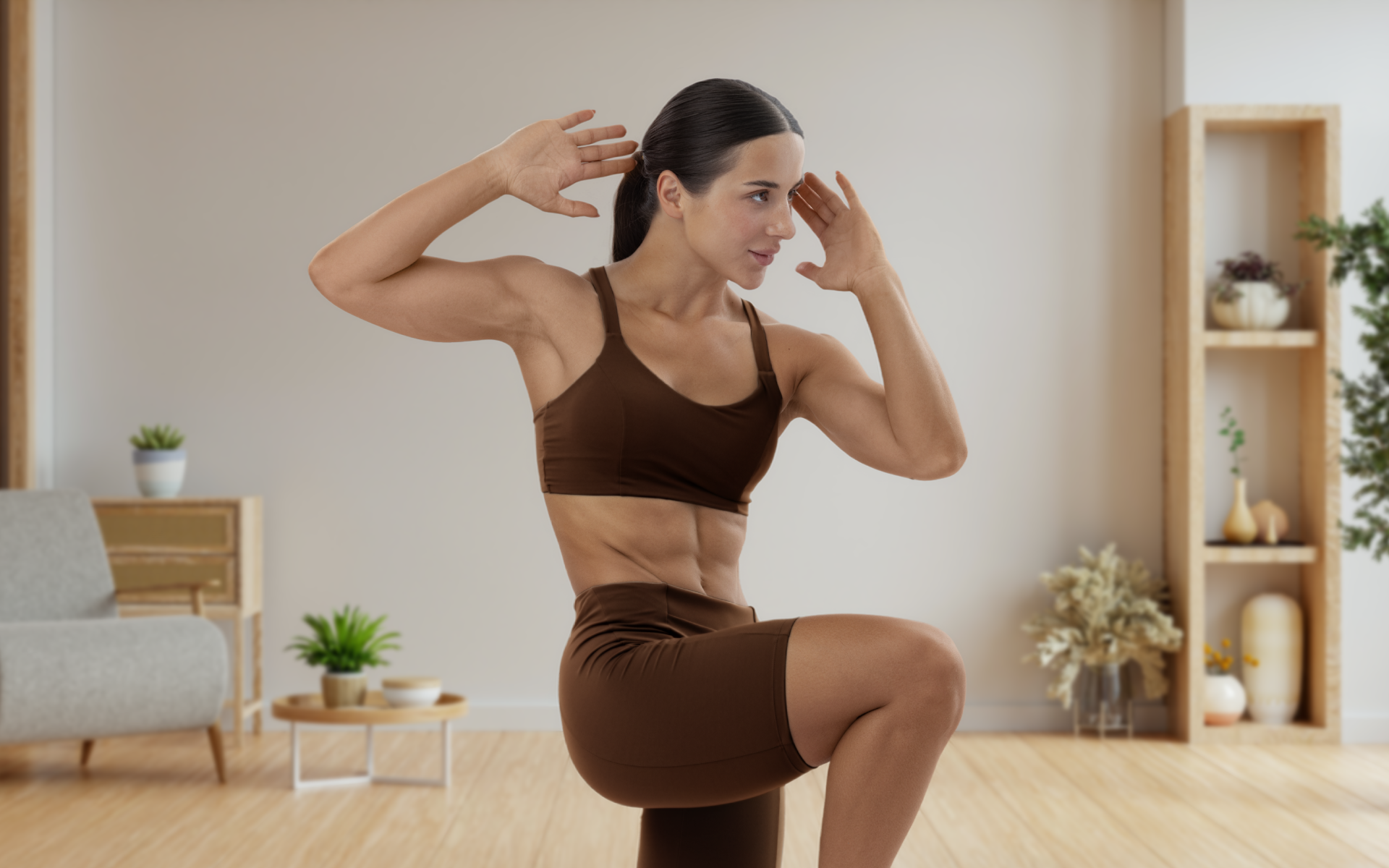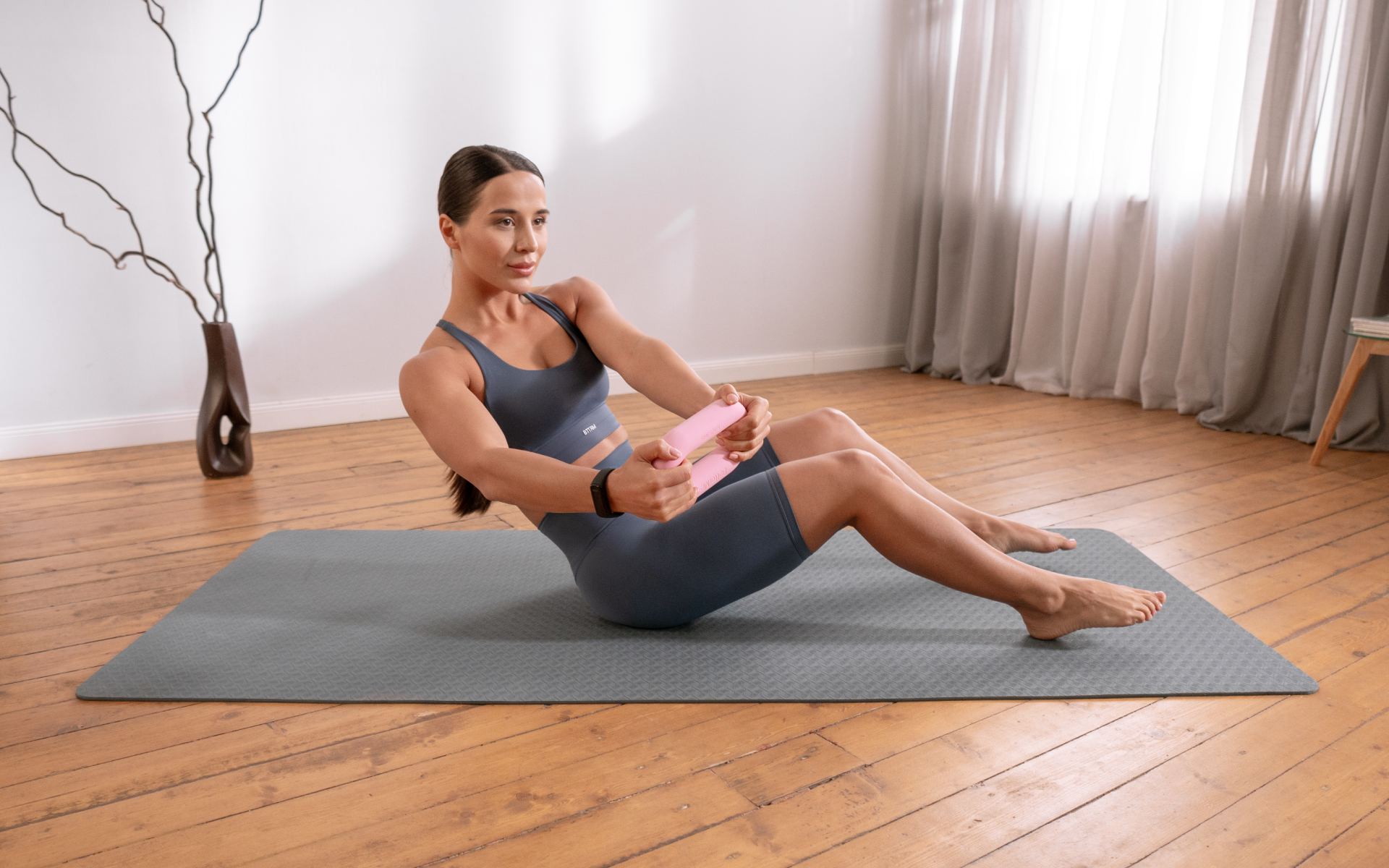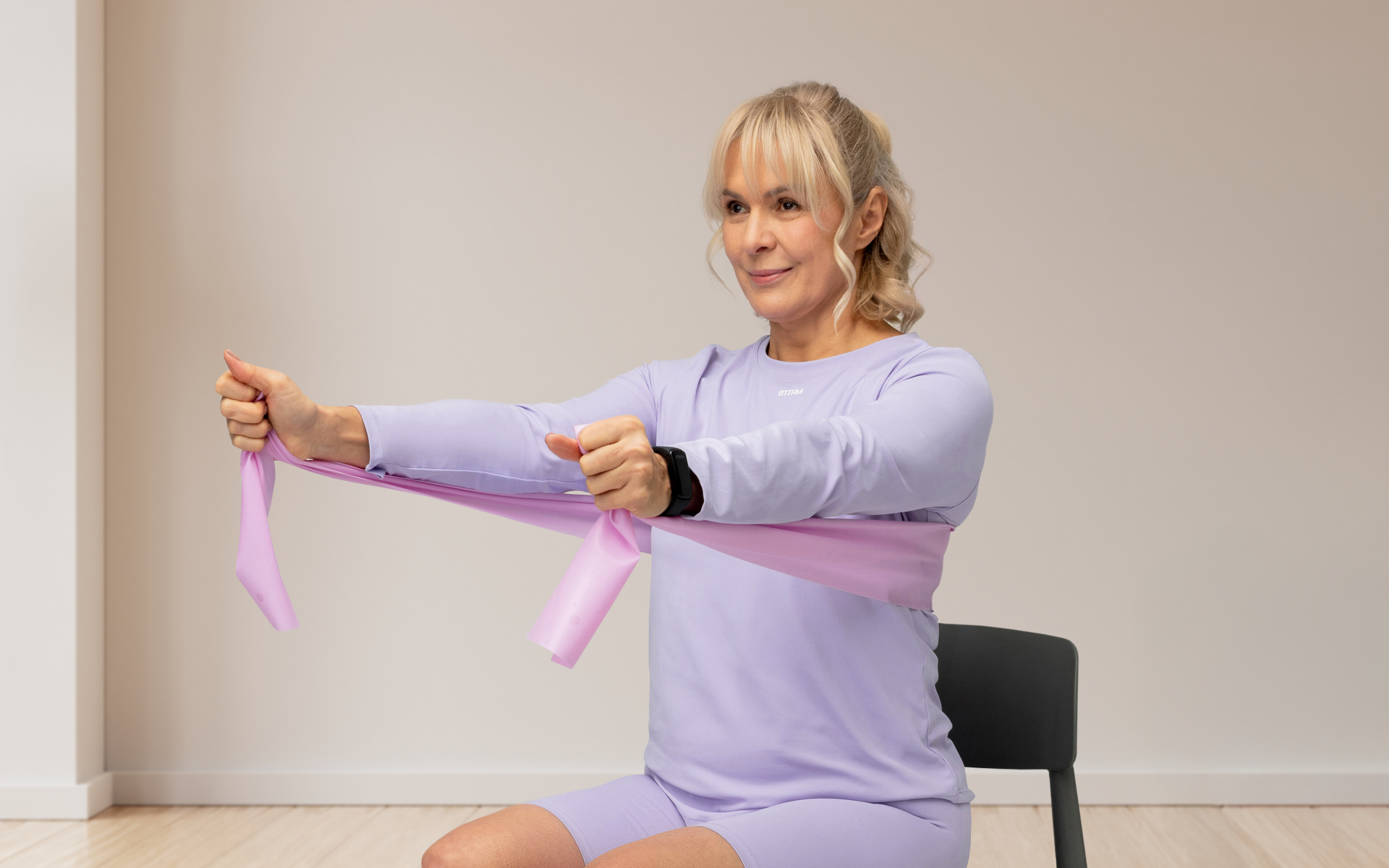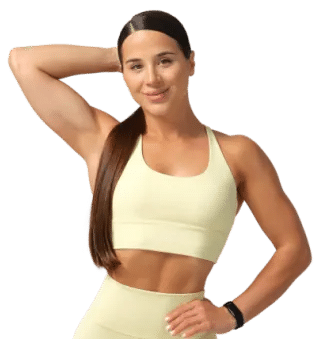Maintaining physical independence is a primary goal for many people as they age. A well-structured exercise program isn’t just beneficial, it’s essential for preserving strength, balance, and the ability to perform daily activities with confidence.
This guide breaks down the science behind effective exercise for older adults and provides a clear, actionable plan. We’ll explore the key physical needs after the age of 60, evaluate common exercise choices, and detail five foundational movements that can transform your physical capabilities.
What Are the Main Physical Needs of the Elderly?
As you move past 60 and into your 70s and beyond, your body undergoes predictable changes. Understanding these changes allows you to target them directly with exercise. The primary physical needs for older adults are centered around combating age-related decline in muscle, balance, and mobility.
Countering Sarcopenia (Muscle Loss)
After 50, adults can lose 1-2% of their muscle mass per year, a process that is called sarcopenia. This accelerates after 70. This loss of muscle is directly linked to a loss of strength, which impacts everything from getting out of a chair to carrying groceries (1).
Improving Muscular Power
Perhaps more important than pure strength is power – the ability to produce force quickly. A recent study of older Japanese adults highlighted that age-related declines in power occur alongside declines in strength (2). Power is what allows you to react quickly to a stumble to prevent a fall, or to stand up from a low sofa without struggling.
Enhancing Balance and Postural Control
The systems that control your balance – your vision, inner ear (vestibular system), and feedback from your muscles and joints (proprioception) – can become less efficient with age. This makes falls a significant risk. A 2024 meta-analysis confirmed that multi-component exercise programs that include specific balance drills are most effective at reducing fall risk (3).
BetterMe: Health Coaching app helps you achieve your body goals with ease and efficiency by helping to choose proper meal plans and effective workouts. Start using our app and you will see good results in a short time.
Preserving Mobility and Flexibility
Joint stiffness, particularly in the hips, shoulders, and ankles, can limit your range of motion (4). This makes everyday tasks such as reaching for something on a high shelf or bending down to tie your shoes more difficult.
Maintaining Functional Capacity
The ultimate goal is to maintain the ability to perform activities of daily living (ADLs), such as bathing, dressing, and walking, as well as instrumental activities of daily living (IADLs) such as shopping, cooking, and managing a household. Functional training, which mimics these real-world movements, has been shown in a recent systematic review to directly improve performance in these areas (5).
Read more: Balance Pilates for Seniors: 10 Exercises You Can Do on Your Own
Is Walking the Best Exercise for Seniors?
Walking is an excellent, accessible, and highly beneficial form of low-impact cardiovascular exercise. It improves heart health, helps manage weight, and enhances mood (6). It should absolutely be a part of your daily routine. However, walking on its own isn’t enough to meet all the physical needs of an older adult.
While walking strengthens the heart and leg muscles to a certain degree, it doesn’t provide a strong enough stimulus to effectively reverse sarcopenia or significantly build the power that is needed for fall prevention. It also doesn’t sufficiently challenge the balance systems or address upper-body and core strength.
Think of walking as the foundation. To build a sturdy and resilient house on that foundation, you need to add a comprehensive framework of strength, power, and balance exercises. Research has confirmed that multi-component programs – those that combine strength, balance, and endurance training – are superior for improving overall function and reducing fall risk compared to any single type of exercise alone (3).
What Are the Best 5 Exercises for Seniors?
These five exercises were selected as they’re functional, which means they directly translate to improved performance in daily life. Together, they form a comprehensive routine that addresses strength, power, balance, mobility, and core stability. They’re among the 5 essential exercises for seniors over 60.
For each exercise, we’ll use a scale called the rate of perceived exertion (RPE), which runs from 1 (no effort) to 10 (maximal effort). Aim for the RPE specified in the instructions.
1. The Sit-to-Stand (Strength and Power)
This is the single most important functional exercise. It strengthens the legs and hips, directly improving your ability to get up from any chair, toilet, or car seat. We’ll perform it with an emphasis on power.
Instructions:
First, try this exercise slowly, then increase the speed. Pay attention to how you’re feeling and slow down if you start to feel dizzy.
- Position a sturdy, stable chair against a wall. Sit on the front third of the seat with your feet flat on the floor, approximately shoulder-width apart.
- Lean your chest slightly forward, keeping your back straight. Your weight should shift toward your feet.
- Press firmly through your heels and stand up as quickly as you can, coming to a full, tall standing position. The goal for this “up” phase is speed with control – it should take less than one second.
- Reverse the motion slowly and with control. Hinge at your hips first, pushing your bottom back as if reaching for the chair. Lower yourself slowly over 2-3 seconds until seated.
- Repeat for the prescribed number of repetitions.
Prescription:
- Sets: 2-3
- Reps: 8-12
- RPE: 6-7/10 (challenging, but you could do a few more reps if needed)
- Rest: 60-90 seconds between sets
Progression:
- To make it easier: Start by placing a firm cushion on the chair to raise the height, or use your hands on the armrests or your thighs to assist you.
- To make it harder: Remove the cushion to lower the starting height. Once you can do 12 reps easily, you can hold a light weight (such as a bottle of water or a dumbbell) against your chest.
2. The Farmer’s Walk (Grip, Core, and Posture)
This exercise involves walking while carrying weight. It builds grip strength (crucial for opening jars and holding on for support), core stability, and upright posture. It mimics carrying groceries or luggage. This is an excellent exercise for seniors at home as it requires minimal space.
Instructions:
- Select your weights. You can use dumbbells, kettlebells, grocery bags with some cans in them, or even full gallon jugs of water. You should have one for each hand.
- Stand tall with a weight in each hand and your arms straight at your sides. Pull your shoulder blades back and down, as if tucking them into your back pockets. Keep your chest up.
- Look straight ahead and start walking in a straight line, taking small, deliberate steps.
- Focus on keeping your torso completely still. Don’t lean to one side or slouch forward. Brace your abdominal muscles as if you’re about to be poked in the stomach.
- Walk for a set distance or time, then turn around carefully and walk back to your starting point.
Prescription:
- Sets: 3
- Distance/Time: Walk for 20-30 seconds or about 40-50 feet per set
- RPE: 5-6/10 (the weight should feel challenging to hold, but not so heavy that your posture breaks down)
- Rest: 60 seconds between sets
Progression:
- To make it easier: Use very light weights or no weight at all, focusing purely on posture.
- To make it harder: Gradually increase the weight you’re carrying or the distance/time you walk.
Learn more in our guide to core exercises for seniors.
3. The Tandem Stance with Head Turns (Balance and Sensory Integration)
This exercise directly challenges your balance systems. By narrowing your base of support and adding head movement, you force your brain to re-learn how to integrate signals from your inner ear and joints to stay stable – a key skill for preventing falls.
Instructions:
- Stand with your hands on a sturdy counter or the back of a solid chair for support.
- Place the heel of one foot directly in front of the toes of the other foot, as if standing on a tightrope. This is the tandem stance. Use your hand for support as needed (remove your hand from the counter/chair only if you feel comfortable)
- Hold this position and try to find your balance. Focus on a spot on the wall in front of you.
- Once you feel relatively stable (even if you’re still touching the support lightly), slowly turn your head to look to the right. Hold for 2 seconds.
- Slowly turn your head back to the center, then slowly turn to look to the left. Hold for 2 seconds. This completes one repetition.
- Switch which foot is in front and repeat.
Prescription:
- Sets: 2 on each side
- Reps: 5-8 head turns (right-center-left-center is one rep)
- RPE: This is about challenge, not effort – you should feel wobbly but always safe and in control
- Rest: 30-45 seconds between sides
Progression:
- To make it easier: Start with your feet side-by-side (narrow stance), then progress to a semi-tandem stance (the heel of the front foot next to the middle of the back foot). Keep your hand on the support.
- To make it harder: Gradually reduce your hand support until you can perform the exercise with your fingertips only, then with your hand hovering just above the support. The final progression is to perform it with no support nearby.
Learn more in our guide to balance exercises for seniors.
4. The Wall Push-Up (Upper-Body Strength and Mobility)
This movement builds strength in the chest, shoulders, and arms, which is important for pushing open heavy doors, getting up from the floor, or pushing a shopping cart. It’s a safe and effective way to build upper-body pressing strength without stress on the joints.
Instructions:
- Stand facing a clear wall, about an arm’s length away.
- Place your palms flat on the wall, slightly wider than your shoulders and at shoulder height. Your fingers should point toward the ceiling.
- Take a small step back with both feet so your body is in a straight line from your head to your heels. Engage your core to prevent your lower back from sagging.
- Slowly bend your elbows and lean your body toward the wall, keeping it in a straight plank position. Go as far as you can comfortably.
- Press firmly into the wall to push your body back to the starting position. Straighten your arms completely. This is one rep.
Prescription:
- Sets: 2-3
- Reps: 10-15
- RPE: 6-7/10
- Rest: 60 seconds between sets
Progression:
- To make it easier: Stand closer to the wall. This reduces the amount of body weight you’re pressing.
- To make it harder: Move your feet further away from the wall. This increases the incline and makes the exercise more challenging. The next step would be to perform the push-up on a high, sturdy countertop, then a coffee table, and eventually the floor (on your knees).
5. The Seated Bent-Knee Raise (Core and Hip Flexor Strength)
A strong core and hip flexors are essential for walking, climbing stairs, and maintaining a stable pelvis. This exercise safely targets these muscles from a seated position and can be one of the best 5 exercises for seniors to lose belly fat as part of a complete program.
Instructions:
- Sit tall on the edge of a sturdy chair with your feet flat on the floor. Don’t lean against the backrest. Place your hands on the sides of the chair for support.
- Engage your abdominal muscles by gently drawing your belly button in toward your spine.
- Slowly lift your right knee toward the ceiling, as high as you can without rounding your back or leaning backward. The movement should come from your core and hip.
- Hold the top position for one second, then slowly lower your foot back to the floor with control.
- Repeat with the left leg. This completes one repetition.
Prescription:
- Sets: 2-3
- Reps: 8-12 per leg (16-24 total movements per set)
- RPE: 5-6/10
- Rest: 60 seconds between sets
Progression:
- To make it easier: Lift your leg only a few inches off the floor.
- To make it harder: Once you can do 12 reps easily, you can add a light ankle weight (1-2 pounds) to increase the resistance.
What Is a Balanced Exercise Routine for Seniors?
A truly balanced routine incorporates several types of fitness into your week. Relying on only one type of training isn’t enough. Based on current research, an optimal weekly schedule for an adult over 60 combines the following elements:
A Model Weekly Schedule:
- Strength and Power Training (2-3 days per week):
- Perform your 5 essential exercises on non-consecutive days (e.g. Monday and Thursday).
- Focus on good form and the prescribed sets, reps, and RPE.
- This is your priority for building muscle and power. A key goal for many people is weight management, and combining these movements is part of how to create a routine with 5 exercises for seniors to lose weight by building metabolism-boosting muscle.
- Cardiovascular Exercise (3-5 days per week):
- Aim for at least 150 minutes of moderate-intensity cardio per week. This can be broken into 30-minute sessions, 5 days a week.
- Moderate intensity means you can still talk but not sing (an RPE of 4-5/10).
- Walking is a great choice. Other options include swimming, cycling, or water aerobics.
- Balance and Mobility Work (Daily or most days):
- Incorporate your tandem stance exercise daily.
- Add 5-10 minutes of gentle stretching, focusing on the calves, hamstrings, hips, and chest.
- This “mobility snack” can be done first thing in the morning or while watching TV.
Functional Benchmarks to Track:
How do you know if your program is working? You can track your progress with these simple tests every 4-6 weeks:
- 5x Sit-to-Stand Test: Time how long it takes you to stand up from a chair and sit back down 5 times as quickly as possible. A time of under 12 seconds is considered a good indicator of functional mobility.
- Gait Speed: Measure a 10-meter (about 33 feet) path. Time how long it takes you to walk it at your normal pace. A walking speed above 1.0 meters per second is associated with better health outcomes.
- Tandem Stance Time: Time how long you can hold the tandem stance without support. Aim for 10 seconds or more.
See our full catalog of senior exercise programs.
Read more: 5-Minute Chair Yoga for Seniors: Science-Backed Moves to Boost Daily Activity
What Are Other Activities Seniors Can Do Every Day?
Beyond your structured exercise routine, remaining active throughout the day is crucial. This is often called non-exercise activity thermogenesis (NEAT), and it contributes significantly to your total daily energy expenditure and overall health (7).
- Gardening: Bending, lifting, and digging are great functional movements.
- Dancing: A fun way to improve balance, coordination, and cardiovascular health.
- Taking the Stairs: When it’s safe and possible, choose stairs over the elevator to build leg strength.
- Active Hobbies: Activities such as tai chi, yoga, bowling, or pickleball are excellent for physical and social engagement. Tai chi in particular has been shown in studies to be highly effective for improving balance (10).
- Walking Breaks: If you find yourself sitting for a long period, get up and walk around your home for a few minutes every hour.
Incorporating an exercise for seniors over 60 at home program is one of the most effective ways to ensure consistency and build lifelong health habits.
Yes, absolutely. Numerous studies have shown that with consistent resistance training, adults in their 70s, 80s, and even 90s can regain significant muscle mass and strength (8). The process is called hypertrophy, and it can be stimulated at any age with the right exercise dose. Vigorous housework such as scrubbing floors, vacuuming, or extensive yard work can contribute to your daily activity levels and burn calories. However, it’s not a substitute for a structured exercise program as it typically doesn’t provide the consistent, progressive overload that’s needed to build significant strength or power. A common goal is to aim for 7,000 to 10,000 steps per day, which is roughly 3.5 to 5 miles. However, the most important thing is to be consistent and gradually increase from your current baseline. Even starting with 2,000-3,000 steps and adding 500 more each week is a fantastic approach. Older adults generally require 7 to 8 hours of quality sleep per night (9). While sleep patterns may change with age (e.g. waking up more frequently), the total amount of sleep that is needed for optimal cognitive function, muscle recovery, and overall health remains consistent with that of younger adults.Frequently Asked Questions
Can seniors regain lost muscle mass?
Does housework count as exercise?
How far should a 70-year-old walk every day?
How much sleep do elderly people need?
The Bottom Line
Investing in a structured exercise routine is the most powerful action you can take to shape your health and independence for years to come. The five exercises that are outlined here provide a balanced and effective starting point.
They’re not just movements, they’re tools to help you build a stronger, more resilient body that is capable of navigating the world with confidence and vitality. Start slowly, be consistent, and listen to your body. The strength you build today is the freedom you’ll enjoy tomorrow.
DISCLAIMER:
This article is intended for general informational purposes only and does not serve to address individual circumstances. It is not a substitute for professional advice or help and should not be relied on for making any kind of decision-making. Any action taken as a direct or indirect result of the information in this article is entirely at your own risk and is your sole responsibility.
BetterMe, its content staff, and its medical advisors accept no responsibility for inaccuracies, errors, misstatements, inconsistencies, or omissions and specifically disclaim any liability, loss or risk, personal, professional or otherwise, which may be incurred as a consequence, directly or indirectly, of the use and/or application of any content.
You should always seek the advice of your physician or other qualified health provider with any questions you may have regarding a medical condition or your specific situation. Never disregard professional medical advice or delay seeking it because of BetterMe content. If you suspect or think you may have a medical emergency, call your doctor.
SOURCES:
- Aging Skeletal Muscles: What Are the Mechanisms of Age-Related Loss of Strength and Muscle Mass, and Can We Impede Its Development and Progression? (2024, mdpi.com)
- Sex- and age-related declines in muscle mass, strength, physical performance, and muscle quality among community-dwelling older adults: A cross-sectional study (2025, sciencedirect.com)
- Effects of multicomponent exercise on the muscle strength, muscle endurance and balance of frail older adults: A meta-analysis of randomised controlled trials (2022, onlinelibrary.wiley.com)
- Is functional training functional? a systematic review of its effects in community-dwelling older adults (2024, eurapa.biomedcentral.com)
- Limited range of motion (n.d., mountsinai.org)
- The multifaceted benefits of walking for healthy aging: from Blue Zones to molecular mechanisms (2023, link.springer.com)
- Non-Exercise Activity Thermogenesis in Human Energy Homeostasis (2022, ncbi.nlm.nih.gov)
- Muscle Mass and Strength Gains Following Resistance Exercise Training in Older Adults 65–75 Years and Older Adults Above 85 Years (2023, journals.humankinetics.com)
- Sleep and Older Adults (2025, nia.nih.gov)
- Tai Chi for fall prevention and balance improvement in older adults: a systematic review and meta-analysis of randomized controlled trials (2023, frontiersin.org)
